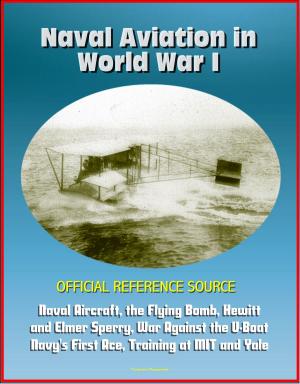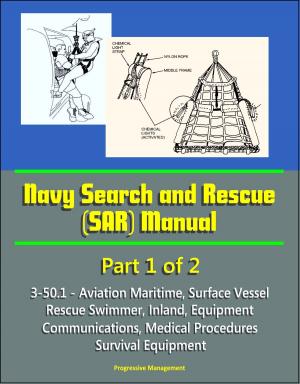Planning and Organizing the Postwar Air Force: 1943-1947 - Roots of AAF, Planning for 70 Groups, Unification, Moving Toward Autonomy, Independence and Organization, Eisenhower and Truman
Nonfiction, History, Military, Aviation, United States| Author: | Progressive Management | ISBN: | 9781310670268 |
| Publisher: | Progressive Management | Publication: | August 14, 2015 |
| Imprint: | Smashwords Edition | Language: | English |
| Author: | Progressive Management |
| ISBN: | 9781310670268 |
| Publisher: | Progressive Management |
| Publication: | August 14, 2015 |
| Imprint: | Smashwords Edition |
| Language: | English |
Professionally converted for accurate flowing-text e-book format reproduction, this Air Force publication untangles the complex history that led to the birth of the United States Air Force after World War II in an excellent work of narrative and analysis. After surveying the struggle for independence to 1941, and planning during World War II for a postwar air force, Mr. Wolk details the events that resulted in the formation of a separate Air Force in September 1947. Significantly, the new Air Force at its birth already possessed a long history and a rich heritage: some forty years as part of the Army, service in two world wars, and a fully developed understanding of its usefulness in war. The new Air Force possessed leaders who knew that how the service was constructed and how it was led and administered would affect how air power could be used, and whether it could contribute fully to the nation's security. Furthermore, the author puts this important story into the broader context of late World War II thinking about postwar defense, and the fierce struggles between 1945 and 1947 over service roles and missions, budgets, and the shape of military policies and forces.
There is also another story in these pages, less dramatic but equally important: the birth of a military service. Few times are more crucial for an institution than the era of its birth, when the basic structure of the organization is established and procedures worked out for the conduct of routine organizational activity. The precedents established often survive far into the future. They provide benchmarks against which change is considered or implemented, and from the beginning that first structure and set of procedures shape the life of the institution, from the making of high policy down to the most mundane details of administrative routine.
For the U.S. Air Force, this process began in 1943 and culminated with the separation from the Army in 1947. In the space of less than five years, in the midst of the greatest air campaigns in history and the fiercest peacetime debate over military policy in the nation's history, the Army Air Forces consummated its two-generation struggle for independence and then began the task of building an air force for the nuclear age.
CHAPTER I - ROOTS OF AAF ORGANIZATION * Early Air Organization * General Headquarters Air Force * Air Organization in World War II * Anticipating Postwar Reorganization * CHAPTER II - PLANNING FOR 70 GROUPS * Early Postwar Planning * Marshall Orders a Resurvey * AAF Protests Resurvey * The War Department and UMT * Establishing the 70-Group Goal * Jamison's Dissent to Bessell Committee * Arnold Urges 70 Groups * Final Approval for 70 Groups * 70 Groups vs UMT * CHAPTER III - UNIFICATION AND A SEPARATE AIR FORCE * Joint Chiefs of Staff Special Committee Report * The Navy's View of the Report * Views of Arnold and Marshall * Forrestal on Autonomy * Eisenhower Supports a Separate Air Force * Truman Advocates a Coequal Air Force * The AAF Plans for Unification * CHAPTER IV - ORGANIZING THE POSTWAR AIR FORCE * Continental Air Forces Strategic Striking Force Postwar Organization of Major Commands Planning the Headquarters Organization Establishment of the Air Board War Department Circular 138 * CHAPTER V - MOVING TOWARD AUTONOMY * Truman Increases the Pressure * Norstad and Sherman Draft a Plan * Agreement between Patterson and Forrestal * Struggle over Roles and Missions * Executive Order 9877 * National Security Act of 1947 * CHAPTER VI - INDEPENDENCE AND ORGANIZATION * 'At Long Last' * Establishing the Air Force * Organizing the Headquarters * Planning the Technical Services * Transfer of Functions * CHAPTER VII - EPILOGUE
Professionally converted for accurate flowing-text e-book format reproduction, this Air Force publication untangles the complex history that led to the birth of the United States Air Force after World War II in an excellent work of narrative and analysis. After surveying the struggle for independence to 1941, and planning during World War II for a postwar air force, Mr. Wolk details the events that resulted in the formation of a separate Air Force in September 1947. Significantly, the new Air Force at its birth already possessed a long history and a rich heritage: some forty years as part of the Army, service in two world wars, and a fully developed understanding of its usefulness in war. The new Air Force possessed leaders who knew that how the service was constructed and how it was led and administered would affect how air power could be used, and whether it could contribute fully to the nation's security. Furthermore, the author puts this important story into the broader context of late World War II thinking about postwar defense, and the fierce struggles between 1945 and 1947 over service roles and missions, budgets, and the shape of military policies and forces.
There is also another story in these pages, less dramatic but equally important: the birth of a military service. Few times are more crucial for an institution than the era of its birth, when the basic structure of the organization is established and procedures worked out for the conduct of routine organizational activity. The precedents established often survive far into the future. They provide benchmarks against which change is considered or implemented, and from the beginning that first structure and set of procedures shape the life of the institution, from the making of high policy down to the most mundane details of administrative routine.
For the U.S. Air Force, this process began in 1943 and culminated with the separation from the Army in 1947. In the space of less than five years, in the midst of the greatest air campaigns in history and the fiercest peacetime debate over military policy in the nation's history, the Army Air Forces consummated its two-generation struggle for independence and then began the task of building an air force for the nuclear age.
CHAPTER I - ROOTS OF AAF ORGANIZATION * Early Air Organization * General Headquarters Air Force * Air Organization in World War II * Anticipating Postwar Reorganization * CHAPTER II - PLANNING FOR 70 GROUPS * Early Postwar Planning * Marshall Orders a Resurvey * AAF Protests Resurvey * The War Department and UMT * Establishing the 70-Group Goal * Jamison's Dissent to Bessell Committee * Arnold Urges 70 Groups * Final Approval for 70 Groups * 70 Groups vs UMT * CHAPTER III - UNIFICATION AND A SEPARATE AIR FORCE * Joint Chiefs of Staff Special Committee Report * The Navy's View of the Report * Views of Arnold and Marshall * Forrestal on Autonomy * Eisenhower Supports a Separate Air Force * Truman Advocates a Coequal Air Force * The AAF Plans for Unification * CHAPTER IV - ORGANIZING THE POSTWAR AIR FORCE * Continental Air Forces Strategic Striking Force Postwar Organization of Major Commands Planning the Headquarters Organization Establishment of the Air Board War Department Circular 138 * CHAPTER V - MOVING TOWARD AUTONOMY * Truman Increases the Pressure * Norstad and Sherman Draft a Plan * Agreement between Patterson and Forrestal * Struggle over Roles and Missions * Executive Order 9877 * National Security Act of 1947 * CHAPTER VI - INDEPENDENCE AND ORGANIZATION * 'At Long Last' * Establishing the Air Force * Organizing the Headquarters * Planning the Technical Services * Transfer of Functions * CHAPTER VII - EPILOGUE















